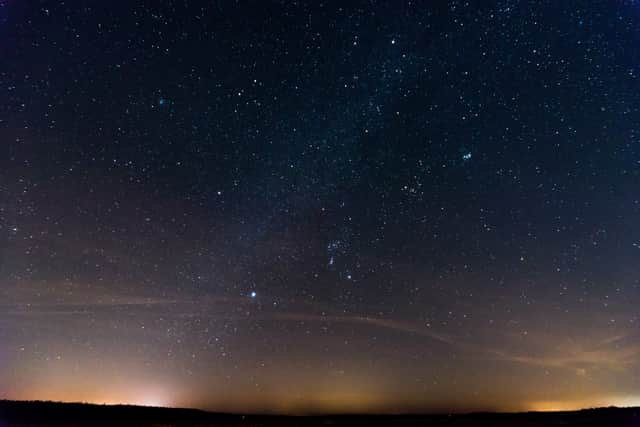Five planets to be visible in the sky this weekend - how to see Jupiter, Saturn, Mercury, Neptune and Uranus
and live on Freeview channel 276
Stargazers will have the rare opportunity to see five planets at once in the night sky tonight (June 17). Though seven planets will be in alignment, five planets will be visible lining up within a 93-degree sky sector for the first time in 18 years.
Brits will have a chance to catch the celestial space show without any fancy equipment, and it will be at its most visible before sunrise on Saturday morning (June 17). Stargazing website Starwalk offered handy tips on how to spot the planets saying: "One of the differences is that the planets, unlike the stars, don’t twinkle."
Advertisement
Hide AdAdvertisement
Hide AdThe planets in question include Mercury, Jupiter, Neptune, Saturn and Uranus. Though, Neptune and Uranus will be a tad more challenging to spot with just the naked eye.
So, what is planetary alignment? Here’s everything you need to know about the exciting celestial event.
How to see the Jupiter, Saturn, Mercury, Neptune and Uranus alignment
To be in with the chance of seeing the alignment the UK stargazers have been advised to get up an hour before the sunrise to catch a glimpse. Astronomer and founder of Stargazing London, Tom Kerss, told The Sun: "It’s well worth setting an early alarm and peering out from your garden, or any south/east-facing window or balcony available to you.”
Stargazing is easy, you just go outside and look up at the night sky, but to get the most spectacular views, there are a few rules you should follow. The best tip is finding a dark-sky site, and checking the weather forecast before going. Light pollution can often affect how much of the night sky occurrences we see, even more so, cloudy weather conditions make it more difficult to see the stars beyond.
Advertisement
Hide AdAdvertisement
Hide AdWhat is planetary alignment?
An alignment occurs when the Earth is one of the planets gathers on one side of the sun and several planets appear to be aligned in the sky. According to Royal Museums Greenwich says: “Occasionally planets seem to occupy the same space in the night sky because of their alignment - though they are in fact millions of kilometres away from each other.”
Starwalk explains there are two common definitions of a planetary alignment. One is ‘An astronomical event when planets gather closely on one side of the Sun at the same time, as seen from above the Solar System’. The second definition is ‘A visual phenomenon when the planets appear close together in a small sky sector, as seen from the Earth’.


The website explains: “Some people think the Solar System planets can form a straight line as viewed from the Sun. However, the planets cannot achieve full alignment in three dimensions. Even a looser grouping in one quadrant (a 90-degree sector) is extremely rare: all planets gather in one quadrant only 7 times in the current millennium.”
When is the next planetary alignment?
Starwalk explains the next time Brits will have a chance to catch a show like this will be on April 20, 2024 when stargazers will have the chance to see a ‘a large morning alignment of Venus, Mercury, Neptune, Mars, and Saturn’.
Comment Guidelines
National World encourages reader discussion on our stories. User feedback, insights and back-and-forth exchanges add a rich layer of context to reporting. Please review our Community Guidelines before commenting.
